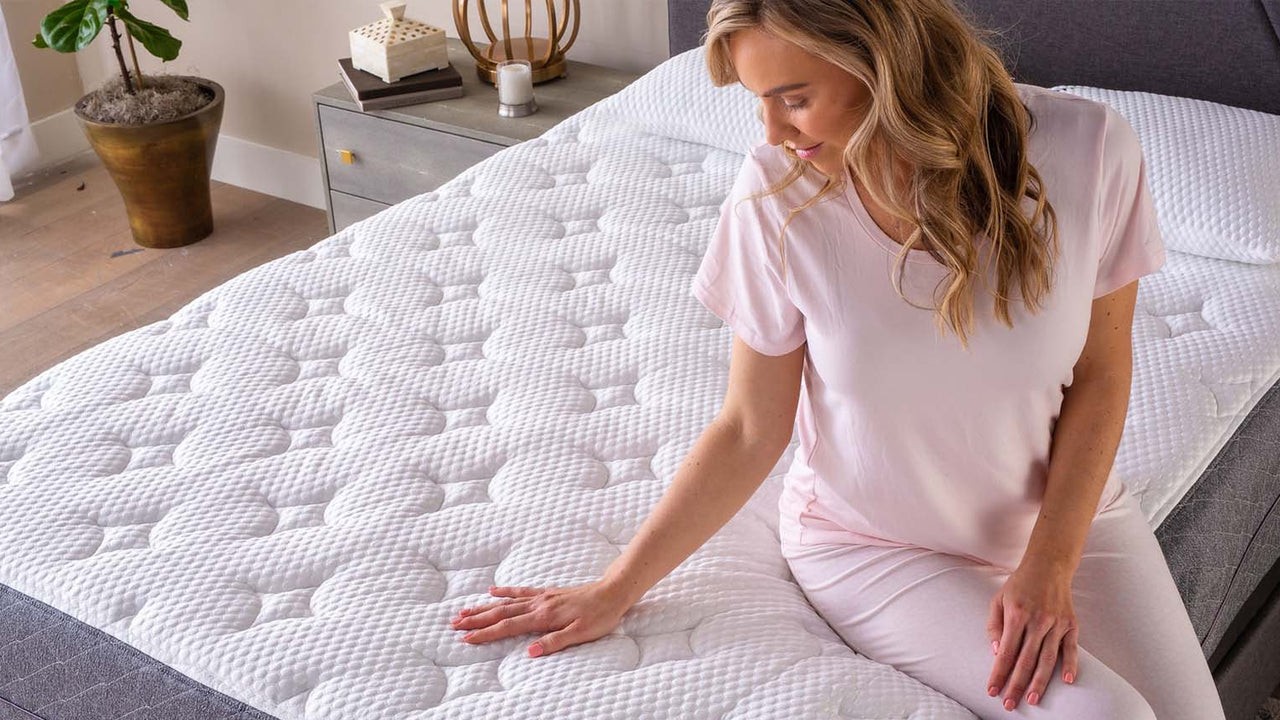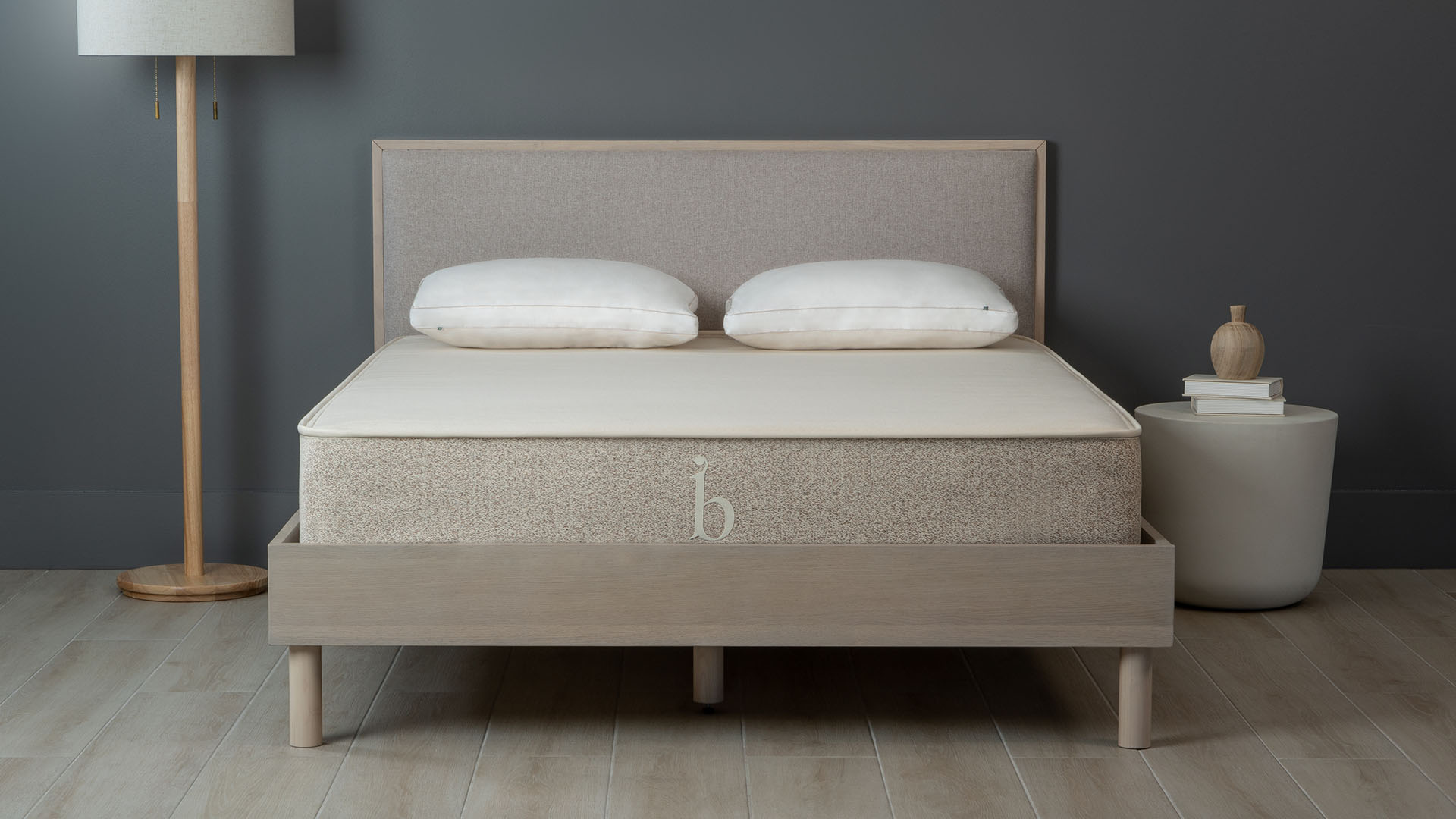What is temperature regulation in a mattress and why does it matter?
Hot sleepers can find relief with a mattress that regulates temperatures

If you're a hot sleeper, you're not alone. Overheating at night is one of the leading causes of sleep disruption, leading to you feeling hot and bothered during the night and groggy and lethargic throughout the day. Thankfully, a mattress with temperature regulation can help. But what exactly is temperature regulation in a mattress?
Temperature regulation is a term that describes a mattress’s overall ability to regulate your body temperature when sleeping and prevent overheating. While all of the top-rated mattresses within our best mattress of 2025 guide offer a certain degree of temperature regulation, some are more effective than others.
Here, we'll explore what a mattress with temperature regulation is, how to spot it, and how it can prevent you from overheating at night.
What is temperature regulation in a mattress?

Temperature regulation in a mattress helps to regulate the temperature of the bed and prevent overheating. This can be done through the inclusion of materials that regulate temperatures naturally, such as wool or cotton. Temperature regulation in a mattress can also be achieved through its build. Whether it's the air pockets created by coils or perforated foam, a mattress with natural airflow is better equipped to regulate your temperature while sleeping.
Temperature regulation is a term often used interchangeably with cooling, but there is a slight difference between them. While the best cooling mattresses actively lower your body temperature while sleeping, a mattress with temperature regulation keeps your core body temperature stable during the night.
Is temperature regulation in a mattress important?
Yes, if you're a hot sleeper who experiences disrupted sleep due to overheating then it is important to invest in a mattress with reliable temperature regulation. According to studies, the optimum temperature for quality sleep is 68 and 77 °F (20 and 25 °C). Sleeping on a mattress that is too hot can cause our core body temperature to rise, which can impact our sleep duration and efficiency.
Reliable temperature regulation is therefore crucial for those prone to overheating, whether it's due to menopause, illnesses, hailing from hotter climates or just simply being prone to sleeping hot.
Mattress materials that improve temperature regulation
Mattress materials and build type can provide reliable temperature regulation, promoting air flow and dissipating excess heat. Here’s a list of the different materials and features that indicate a mattress boasts reliable temperature regulation.
Hybrid build
The inclusion of coils within the best hybrid mattresses provide both reliable support and temperature regulation. The pocketed coil system naturally encourages airflow throughout the mattress's support core, preventing hot air created by body heat from becoming trapped.
Perforated foam

In a similar way to hybrid mattresses, perforated foam creates air channels that prevent air from becoming trapped within the mattress. Perforated foam helps dissipates heat while you sleep, allowing you to rest more comfortably.
Infused foam
Infused foams can include gel, copper, graphite or charcoal. Each works in slightly different ways (and with varying degrees of success) to wick away heat and moisture from the body and promote air circulation.
Open cell foam
Similar to how perforated foam works, the open cell in this foam layer contains air bubbles allowing better air flow, cooling down the mattress surface. Open cell foam is used in practically all all-foam mattresses in order to counteract the heat-trapping tendencies of dense foam.
Moisture wicking materials
Moisture wicking materials draw heat and moisture (sweat) from the body and dissipate them across the surface of the mattress, where it evaporates. Effective moisture wicking materials include semi-synthetic fabrics like Tencel, lyocell and viscose.
Natural materials

Some of the best organic mattresses harness the naturally temperature regulating properties of natural materials, such as wool, cotton and latex. Wool has its special temperature regulating benefits of wicking away moisture and sweat. Organic cotton is an extremely soft and breathable fabric popularly used both within bedding and as mattress covers, while latex naturally facilitates airflow and dissipates heat.
What mattresses provide unreliable temperature regulation?
A mattress with unreliable temperature regulation will lack airflow and any natural material which facilitates it, such as wool, cotton or latex.
Unlike hybrid mattresses with their open structure, some memory foam mattresses are prone to trapping heat, due to the dense nature of the material. The denser the mattress, the hotter it will be to sleep on. If you’re planning to buy a memory foam mattress due to its many other benefits, opt for one of the best memory foam mattresses, which harness cooling technology, such as gel-infused foam, to keep your temperatures regulated throughout the night.
Sign up to get the BEST of Tom's Guide direct to your inbox.
Get instant access to breaking news, the hottest reviews, great deals and helpful tips.

Becky is a Sleep Staff Writer at Tom’s Guide covering all things sleep-related including product reviews, research studies, news and explainers. She works on specialist bedding content and is responsible for buyer’s guides like the best pillows for all sleepers and best mattress protectors focusing on popular brands such as Tempur-Pedic, Avocado, Coop Home Goods and more. Becky is a PPA accredited journalist who is keen to explore the intricacies of sleep, its effects on skincare, mental wellbeing and work performance. While not thinking of sleep, she can be seen reading in cosy bookshops or learning about global food culture.
